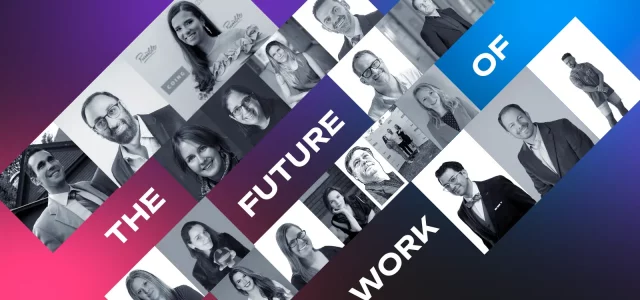If you are or have been a part of the workforce, you have probably encountered workplace discrimination, in one form or the other. The road to success is paved with discriminating practices that happen on an everyday basis, and we’re still searching for ways to fix this.
As we delve into the topic, our goal is to illuminate the intricacies behind workplace discrimination:
- What discrimination at work is?
- What kind of practices are considered unlawful?
- What types of discrimination exist?
- How to protect yourself from discrimination?
In search of guidance, we turned to CAKE.com’s HR Generalists with years of experience — Aleksandra Babić and Ena Popović — to help us answer some of these burning questions.
Without further ado, let’s dig deep into the roots of workplace discrimination.
What is discrimination in the workplace?
Workplace discrimination is the process of making prejudicial distinctions between people, which, as a result, causes unfair classification and unjust treatment.
In general, discrimination is either strongly or loosely dependent on a social and/or cultural setting. When it comes to the workplace — a pseudo-society that operates within its own standards where the environment and the number of people are limited — discrimination can be more strongly felt.
For example, a case of discrimination that results in unfair classification can occur when people with the same background and skills are up for promotion, but the deciding factor boils down to either gender or age.
And, such and similar types of discrimination are quite common.
In fact, a recent Monster Poll on workplace discrimination found that 91% of workers experienced discrimination in the workplace, and likewise, 77% witnessed an act of discrimination at work.
Further reading:
Discrimination directly affects the work environment by making your professional relations toxic and unhealthy. Read the following blog for tips on dealing with it:
What types of discrimination in the workplace are there?
Throughout the centuries, discrimination usually revolved around peoples’ different characteristics, such as their:
- Race,
- Gender,
- Age,
- Religion,
- Nationality, and
- Disability.
Some of the most common situations at work where discrimination happens include:
- Hiring — unfair treatment during the hiring process, including biased selection criteria or discriminatory job advertisements,
- Termination — laying off employees based on characteristics that had no impact on their overall performance,
- Compensation — paying different salaries or benefits to employees that have the same job description based on discriminatory factors,
- Promotions — denying promotions and career advancement opportunities based on discriminatory factors, and
- Job assignments — providing unequal job responsibilities or tasks based on personal characteristics rather than qualifications.
Let’s take one situation and look at examples of how they can be discriminatory — such as the hiring process.
What are some examples of discrimination during the job application and interview process?
Naturally, the first encounter with workplace discrimination usually starts during the job application. Our HR generalist, Aleksandra Babić, has learned about it through years of experience and shed some light on the examples of discrimination for us.
Namely, the most common factors leading to initial discrimination during the hiring process are usually gender, age, and physical appearance.
When it comes to discrimination based on age, Aleksandra explained there are many sensitive categories, one of which are women 45+ years of age:

“The most common example of discrimination in the selection process is still age. Although many have been leaving out this piece of information from their CVs for several years now, there are still interview questions that uncover it.
Practice shows that women 45+ years of age are a particularly sensitive category when it comes to discrimination.”
Moreover, she stated that the modern world is still partially man-oriented and that gender inequality is still felt to this day:

“There’s still a division between “male” and “female” jobs, and in many industries, men have the advantage over women in management positions [. . .] When it comes to the IT industry, which is largely male-dominated, job offers after a successful interview can also differ based on the applicant’s gender — the term “pay gap” is often associated with this part of the hiring process.”
Lastly, Aleksandra believes that many professional roles around the working industries are often “reserved” for candidates that fit the desired physical profile:

“The selection process is also often based on the physical appearance of the candidate. When it comes to the positions that involve working with people (Sales, PR, Reception, etc.), candidates are discriminated against based on their skin color, various physical impairments, and body weight.”
Why do workers feel uncomfortable reporting discrimination?
The same Monster poll cited earlier found that only 44% of workers feel comfortable reporting discrimination felt at work to the HR department, while 28% do not report discriminatory behavior at all.
To get to the bottom of this, we turned to Ena Popović to get some insight into why employees feel like they should not report discrimination. Turns out, they may not feel well supported by the administration:

“I believe one of the main reasons employees don’t feel comfortable reporting discrimination in the workplace is a lack of trust and fear of the consequences that may arise from reporting discrimination. The consequences can be job loss, demotion, a hostile work environment, and societal condemnation.“
However, Ena also believes that the reason could lie in the fact that employees may not have enough information on discrimination to recognize it, or simply don’t know the processes behind reporting it:

“Another reason for not reporting or feeling uncomfortable reporting discrimination can be a lack of awareness about what discrimination actually is, as well as insufficient information on who to turn to and what steps to take.”
What kind of employer practices are unlawful?
Unlawful employer practices refer to the violation of local or federal laws and/or policies directly connected to forms of discrimination.
If the acts of discrimination go too far, or if reporting the issue to the higher-ups or HR department is not enough — there are many laws that protect employees.
When it comes to the US, some of the most common laws related to unlawful practices that protect employees are the following:
- The Civil Rights Act,
- Age Discrimination in Employment Act (ADEA),
- Equal Pay Act (EPA), and
- Section 504 of the Rehabilitation Act of 1973.
The Civil Rights Act was passed in 1964 and still serves as the benchmark document that focuses on discrimination as a whole. Provisions of this Act forbids discrimination on the basis of sex and race in hiring, promoting, and firing employees across the states.
The ADEA serves to protect workers 40 years of age and older who find themselves disadvantaged to retain and regain employment in the modern days of rising productivity.
The Equal Pay Act (EPA), on the other hand, protects men and women who perform equal amounts of work in the same establishments from wage discrimination.
Finally, section 504 of the Rehabilitation Act of 1973 is designed to prohibit discrimination on the basis of disability in programs conducted by federal agencies.
The penalties for violating these laws vary on the nature of the transgression and may include:
- Financial penalties,
- Revoking business/operating licenses, and
- Criminal penalties for major transgressions.
Further reading:
To learn more about US state laws designed for employees and employers, browse through the following section:
How can employers help battle discrimination?
Luckily, we live in modern times with modern laws and practices that help employees protect themselves from discrimination.
As an employee, you can turn to HR and many laws to stand your ground and protect yourself from incoming discriminatory practices.
But what about employers? How can they affect change when it comes to discrimination?
The employer usually operates on multiple fronts and employs hundreds of workers. So, they cannot possibly be everywhere at once and keep track of the hiring processes and what goes on in the workplace.
We talked a great deal about it with our HR generalists, and here’s what Aleksandra had to say about how employers can help prevent discrimination and make the workplace more inclusive.
Step #1: Make non-discrimination your company value
If you’re focused on making people aware of discrimination as an issue, you’ll go a long way in helping abolish it. As Aleksandra puts it, leaders need to be familiar with this topic and their own actions should clearly demonstrate that discrimination at work is not supported:

“If a company emphasizes non-discrimination as a value and champions this topic, it’s essential to put this value into practice through all levels of management. Therefore, people in managerial positions should support these ideals.”
Step #2: Educate and keep your employees informed about discrimination
The number of employees who feel discriminated against is still high. In fact, a study conducted by the Bureau of Labor Statistics found that 7.6% of people with a disability were unemployed in the US, which raises major concerns regarding discrimination.
We asked Aleksandra about her opinion on diversity and the education employers can provide to lower the chances of discriminating against people with disabilities in the workplace:

“Training employees on this topic in various ways is essential. The goal of education should be to inform on the importance of inclusion and all the benefits that diversity can bring on many levels.”
Step #3: Organize events, gatherings, and campaigns
Raising awareness of discriminating practices and organizing events for that purpose, goes a long way in battling discrimination. In fact, Aleksandra proposes organizing frequent activities that would create a positive atmosphere where everyone feels accepted:

“Activities like these help raise awareness on this topic and encourage a more proactive approach to combating discrimination. This way, the company will also publicly present itself as a space where everyone is equally accepted.”
Step #4: Create inclusive teams
When it comes to fostering a culture of collaboration, it is crucial to recognize the significance of creating inclusive teams that embrace diversity across various categories.
In Aleksandra’s words, diversity and being different do not affect performance since everyone has a distinct set of skills:

“Encouraging team diversity (by gender, education, age, seniority, etc.) is a good practice. Each team member has a distinct set of abilities, skills, and knowledge that are unique and that contribute to the achievement of group goals. This should be highlighted as a value.”
Step #5: Practice and encourage open communication about workplace discrimination
If, in spite of introducing these ideals and policies, discrimination does occur, Ena suggests that employers should address the issue and create an atmosphere where such a matter can be openly talked about:

“Efforts should be made to create an atmosphere where employees feel free to openly share issues of discrimination without the fear of consequences. Open communication can contribute to the development of trust between employees and employers.”
Ena further suggests three strategies for encouraging employees to speak up:

“Team leaders should encourage employees to openly communicate by:
- Promoting a feedback culture,
- Being willing to listen to every team member, and
- Being receptive to all feedback.”
Final thoughts: Harboring good communication minimizes discrimination
There are further ways to go into battle against discrimination, but the change is evident even now — employers around the world have started nurturing healthy work environments to ensure their workers are happy, secure, and protected.
In Ena’s words:

“Employers should create and maintain a company culture that values trust and diversity, where every employee feels accepted, safe, respected, and valued. These values should be conveyed through all levels of management, and it’s essential that managers themselves set examples for other employees.”
In conclusion, by understanding and educating their employees, getting familiar with relevant laws, and doing everything in their power to raise awareness where and how it matters, employers can create spaces where employees feel valued and respected — spaces where discrimination is less likely to occur.
How we reviewed this post: Our writers & editors monitor the posts and update them when new information becomes available, to keep them fresh and relevant.



